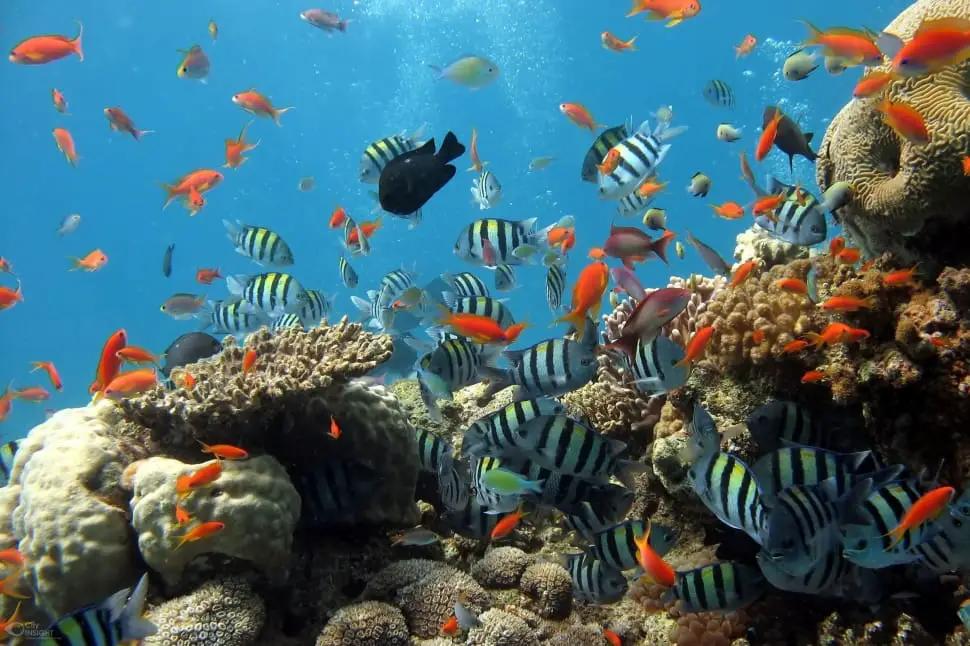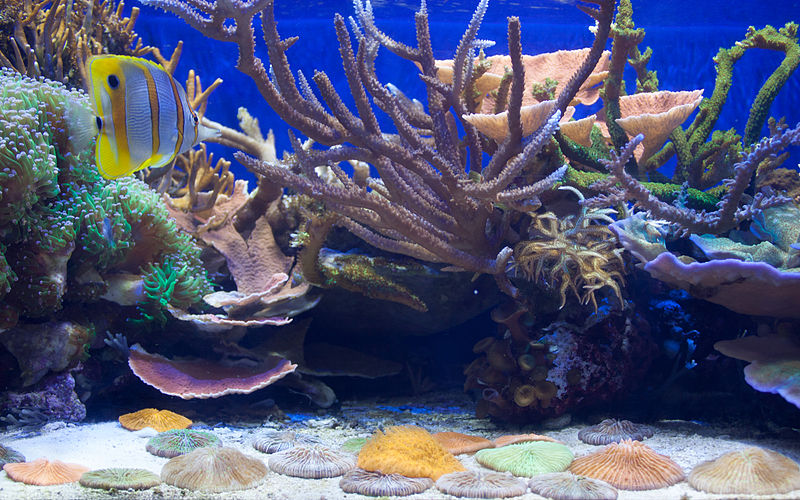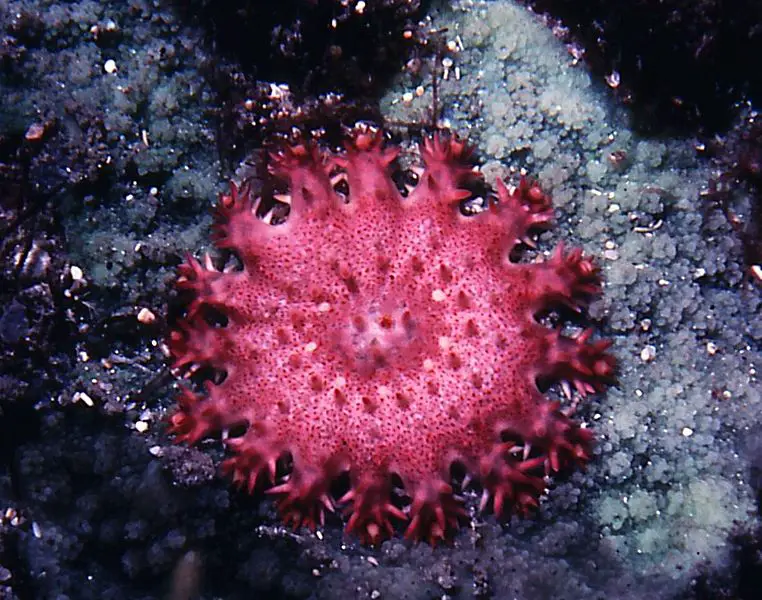What are Some Compatible Tank Mates for Corals: A Reef Aquarium Guide
Setting up a reef aquarium can be a rewarding experience, as it allows hobbyists to create a beautiful and diverse underwater ecosystem in their own homes. One of the essential aspects of maintaining a thriving reef tank is selecting compatible tank mates for the corals. Not all marine life can coexist peacefully with corals, so choosing suitable species is crucial to ensure the aquarium environment’s health and stability.
Numerous corals can be included in a reef aquarium, each with specific requirements and preferences regarding tank mates. A well-thought-out assortment of fish and invertebrates is necessary to promote coral growth and maintain the ecosystem’s delicate balance. Some of the best companions for corals include clownfish, gobies, and cardinalfish, which are known to have reef-safe statuses. Signal gobies, in particular, are excellent choices due to their symbiotic relationship with some coral species.
In addition to selecting suitable fish species, invertebrates like shrimp, snails, and starfish can also make great tank mates for corals. These creatures often benefit the coral by keeping the tank clean and algae-free. Ultimately, a carefully planned collection of compatible tank mates will help maintain a healthy and thriving reef aquarium for both the corals and their aquatic companions.
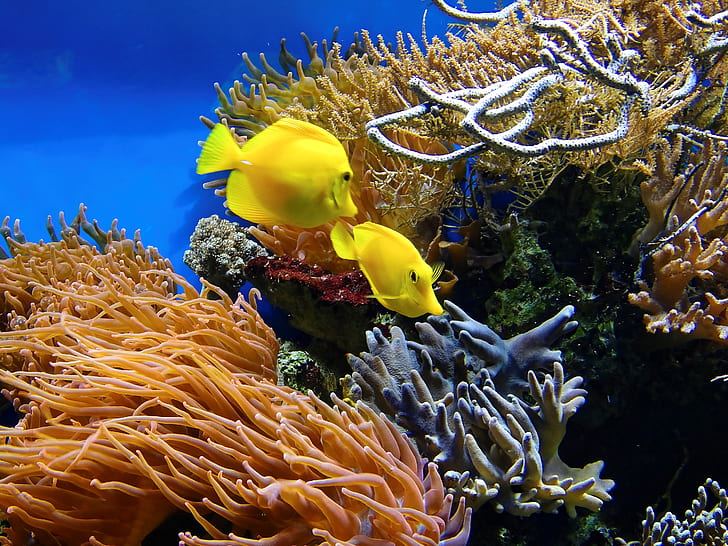
Coral Compatibility with Tank Mates
Generally Compatible Species
Many corals can live in harmony within a reef aquarium. Some examples of species that are generally compatible with one another include:
- Zoanthids and Palythoa
- Soft corals (e.g., Sinularia, Nepthea, and Lemnalia)
- Euphyllia (e.g., hammer, frogspawn, and bubble corals)
It’s essential to provide enough space between coral species to prevent territorial issues or potential harm caused by their natural growth competition.
Can Coexist with Caution
Some coral species can coexist, but they require extra caution and care to ensure that they don’t harm one another. Maintaining a proper distance and understanding the needs for these corals is crucial. Examples of such species include:
- LPS (large polyp stony) corals
- SPS (small polyp stony) corals
- Pipe organ corals
Monitor these corals closely to ensure that they don’t encroach on one another’s space. Additionally, monitor water quality, and adjust any possible toxins that may be released as needed.
Not Compatible Species
Certain corals are not compatible with others due to their aggressive nature, where they can release potent toxins or have long stinging tentacles that can harm other corals within proximity. Some examples of not compatible species are:
- Galaxea corals
- NPS (non-photosynthetic) corals, such as sun corals and black sun corals
- Carnivorous soft corals, like Dendronephthya or Chili coral
These species should be given ample space, or many aquarists opt to keep them in separate tanks to avoid unnecessary conflict and potential damage to more peaceful coral species.
Fish Selection Criteria
When choosing compatible tank mates for corals in a reef aquarium, there are several factors to consider. This section will discuss the importance of considering the tank’s temperament, size, disease, and stress when selecting fish to coexist with corals.
Temperament
The fish’s temperament is essential when determining suitable tank mates in a reef aquarium. Generally, fishes that are least dangerous to corals do not have the jaws and teeth suitable for grazing on algae or sessile invertebrates. Instead, you should look for zooplanktivores, microcarnivores that feed on tiny crustaceans, or carnivores that suck up larger prey items (e.g., fish-eaters) (source).
Size
The size of the fish plays a crucial role in maintaining a peaceful and healthy environment in a reef aquarium. Selecting fish of similar size can minimize aggression and competition among the species. Also, ensure the chosen fish won’t outgrow the tank or accidentally damage the corals while swimming.
Disease
Maintaining a disease-free environment is essential for the aquarium’s inhabitants’ overall health. A proper quarantine process for newly acquired fish can help prevent the introduction of potential diseases into the tank. It is crucial to research the species’ specific requirements and risks related to diseases before adding them to the reef aquarium to ensure the safety of your corals and the other tank occupants.
Stress in the Tank
Incompatible species may increase stress levels in the tank, which may result in disease or a higher mortality rate. Ensure proper hiding spots, enough swimming space, and stable water conditions to minimize stress. Additionally, select fish with similar environmental requirements to your corals, including lighting, water flow, and water parameters. This will help create a harmonious environment beneficial for both the corals and the fish (source).
Common Compatible Fish Species
Clownfish
Clownfish are some of the most popular and recognizable reef-safe fish, known for their colorful markings and fascinating symbiotic relationship with anemones. Several species of clownfish, such as the Ocellaris clownfish, coexist well with corals and other reef inhabitants in aquariums. These fish are generally peaceful, easy to care for, and make excellent additions to any reef tank.
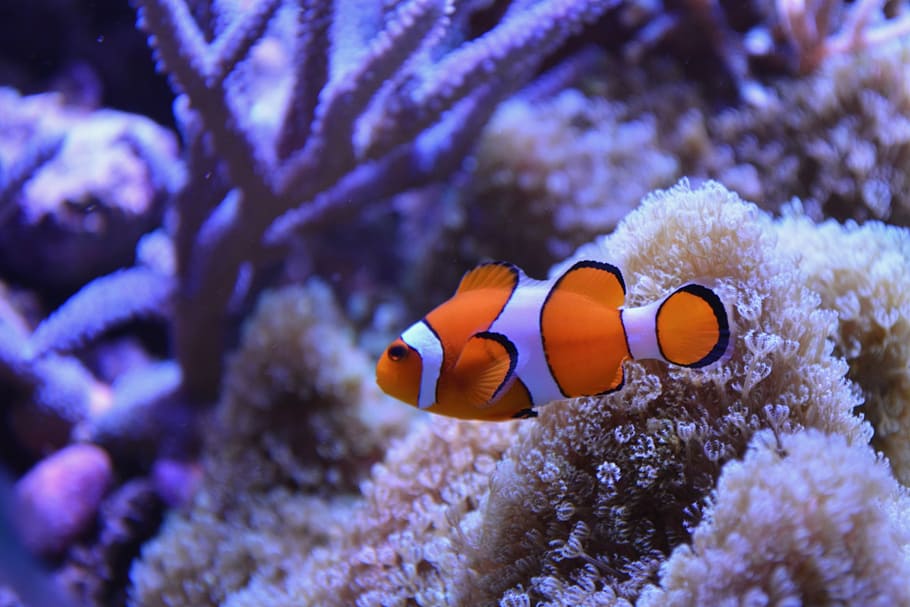
Gobies
Gobies are small, bottom-dwelling fish that are ideal for reef aquariums. They are highly diverse, with many species available to suit various tank setups. Gobies are peaceful and easy to care for, making them an excellent choice for beginner and experienced aquarists. Many species form symbiotic relationships with other invertebrates, such as pistol shrimp, adding an extra layer of interest to their behavior.
Dartfish
Dartfish, including the popular Firefish, are slender and brightly colored fish that thrive in a reef environment. This group of fish is typically peaceful and adds a splash of color and movement to any aquarium. They do best in tanks with plenty of hiding spots and are ideal for most reef tank setups, given their small size and timid nature. In addition, Dartfish are known for their exquisite color patterns, making them an attractive addition to a vibrant coral ecosystem.
Wrasses
Ideal for a reef aquarium, wrasses encompass a wide variety of fish species, including the beautiful Fairy wrasses and various cleaner wrasses that help control pests in the tank. Wrasses generally display striking colors and markings and exhibit interesting behaviors, such as burying themselves in the sand at night. They get along well with corals and other reef organisms, provided they have enough room to swim and explore.
Blennies
Blennies are small, elongated fish known for their curious personalities and quirky behavior. They can be an excellent addition to a reef aquarium, as they do not threaten corals or other invertebrates. Many blenny species explore the nooks and crannies of rockwork, adding life and movement to the aquarium. Some blennies, like Lawnmower blennies, also eat algae, providing the extra benefit of keeping the tank clean and healthy.
Coral Types and Compatibility
Soft Corals
Soft corals are a popular choice for many reef aquarium hobbyists due to their flexible, non-ridged structures and adaptability to different environments. In addition, they are generally hardy and beginner-friendly, making them an ideal choice for first-time marine aquarium enthusiasts. Some examples of soft corals include mushroom corals (Actinodiscus spp.), leather corals (Sinularia spp.), and waving hand corals (Anthelia spp. & Xenia spp.)1. Soft corals are compatible with most tank mates, including fish and invertebrates, but should be monitored for aggressive species that may harm their delicate structures.

LPS Corals
LPS (Large Polyp Stony) corals are characterized by their sizable polyps and stony calcium carbonate skeletons2. They come in various shapes and colors, with some popular species being pineapple corals (Capnella spp.), green star polyps (Briareum spp.), and toadstool mushroom corals (Sarcophyton spp.)1. While larger than their SPS counterparts, LPS corals are generally slower-growing and may require specific water conditions, lighting, and nutritional needs. They are compatible with many tank mates, particularly those that are non-aggressive and do not pose a threat to their vulnerable polyps.
SPS Corals
SPS (Small Polyp Stony) corals are known for their intricate stony skeletons made of calcium carbonate and smaller polyps2. They typically grow quickly and can create beautiful reefscapes in aquariums but require more advanced care due to their sensitivity to water conditions, lighting, and flow. When selecting tank mates for SPS corals, it’s essential to choose species that are reef-safe and non-intrusive, as aggressive or predatory tank mates may damage or consume these delicate corals.
Zoanthids
Zoanthids, or zoas, are a group of colorful soft corals coveted for their ease of care, impressive growth rates, and stunning colors. They are an ideal candidate for beginners as well as seasoned reef keepers. Zoanthids are compatible with most other coral types and a wide range of tank mates, including fish and invertebrates. However, it is crucial to ensure that your tank mates are reef-safe and do not consume or disturb the soft polyps of your zoanthids.
Water Parameters and Tank Conditions
When setting up a reef aquarium for corals and their compatible tank mates, it is crucial to maintain proper water parameters and tank conditions to ensure their health and well-being.
Temperature
The temperature in a reef tank plays a significant role in the health of corals and saltwater fish. A stable temperature between 78-80°F (25-27°C) is ideal for most reef tanks, as it promotes healthy coral growth and keeps fish comfortable and stress-free.
Salinity
Salinity is another essential water parameter in a reef tank. A specific gravity (salinity) level of 1.023-1.025 is recommended for maintaining a balanced environment for corals and their tank mates. If necessary, monitoring and adjusting salinity levels can prevent issues such as algae blooms and fish stress.
Alkalinity
Alkalinity, or the buffering capacity of water, helps stabilize pH and maintain a healthy environment for corals and saltwater fish. A target alkalinity level between 8-12 dKH is advised for reef tanks. Maintaining proper alkalinity levels allows corals to build their calcium skeletons and grow in a well-balanced environment.
Calcium
Calcium is a vital element for coral growth and development, as it contributes to forming calcium carbonate skeletons. It is also essential for the health of certain saltwater fish and invertebrates. For a thriving reef tank, it is recommended to maintain calcium levels between 380-450 ppm. Regular testing and supplementation can ensure optimal calcium levels for the tank’s inhabitants.
Closely monitoring water parameters and maintaining proper tank conditions are critical to a thriving reef aquarium, housing healthy corals and compatible tank mates.
Coral Health and Reproduction
Coloration
The coloration of corals plays a significant role in their overall health. The vibrant colors we see in corals are due to the presence of symbiotic algae called zooxanthellae, which provide corals with energy through photosynthesis. Corals can exhibit various colors, such as brown, yellow, and green, depending on the type and density of zooxanthellae present. Healthy corals typically have vibrant colors, while stressed or damaged corals may appear pale or faded.
Spawning
Coral reproduction is crucial for the maintenance and growth of coral reefs. Corals reproduce both asexually and sexually. Asexual reproduction involves budding off new clonal polyps from parent polyps, allowing colonies to expand or form new ones. Sexual reproduction, on the other hand, involves the production and release of eggs and sperm into the water column, where fertilization occurs, and the embryos develop into larvae externally.
Eggs and Sperm
The release of eggs and sperm in corals, known as spawning, is a remarkable event that occurs at specific times during the year, often synchronized with lunar cycles and temperature changes. Some coral species are hermaphroditic, producing both eggs and sperm, while others are gonochoric, which means they produce either eggs or sperm. The fertilized eggs develop into larvae called planulae, which settle onto a suitable substrate and begin growing into mature coral polyps5.
Fleshy Polyps
Certain coral species, such as the popular Torch Coral (Euphyllia glabrescens), are characterized by their long, thick, flowing, fleshy polyps that emerge from a calcified stone base. These large polyp stony (LPS) corals contribute to the beauty and biodiversity of saltwater reef aquariums, providing unique habitats and hiding spots for various tank inhabitants.
Geographical Distribution and Habitat
Indo-Pacific Region
In the vast Indo-Pacific region, corals flourish in various marine habitats. This region contains a diverse range of coral species and provides suitable water conditions that support their growth. These conditions include warm, shallow, and clear waters where sunlight can easily penetrate to aid in the corals’ photosynthesis.
The Indo-Pacific region is home to both branching and massive coral types, which contribute to creating complex reef structures. These structures provide shelter and protection to a myriad of marine life and offer a unique ecosystem for various fish and invertebrates that are compatible with corals.
Fiji
Fiji, a small island nation in the South Pacific, is well-known for its spectacular coral reefs. The diverse coral habitats in Fiji contribute to the country’s thriving marine life. The archipelago’s reefs are characterized by a mix of hard corals like branching Acropora, massive corals such as Porites, and soft corals that sway in the currents.
The water conditions in Fiji support an array of coral species, with currents providing a steady flow of nutrients that contribute to their growth. Due to the healthy coral reefs, Fiji’s waters are an ideal habitat for many fish species and invertebrates, making it a popular destination for scuba divers and marine life enthusiasts.
Great Barrier Reef

The Great Barrier Reef, located off the coast of Australia, is the largest and most diverse coral reef system in the world. It is home to over 1,500 species of corals and provides a habitat to a vast range of marine life. The environmental conditions within the reef create suitable areas for various types of corals to grow, including branching, and massive and soft coral species.
The Great Barrier Reef’s water conditions are crucial for sustaining the coral ecosystems. The tropical climate, with water temperatures between 24°C-30°C, provides the ideal environment for coral development. Furthermore, the reef’s pristine water promotes better light penetration, allowing photosynthesis to occur more efficiently.
In conclusion, coral reefs, including those in the Indo-Pacific region, Fiji, and the Great Barrier Reef, offer unique, diverse habitats for marine life. The water conditions and coral types vary, enabling species to flourish and creating distinct ecosystems perfect for compatible fish and invertebrates.
Additional Coral Care Considerations
Light Requirements
Proper lighting is crucial for the health and growth of corals in reef aquariums. Different coral species have varying light requirements, depending on their natural habitats. For instance, torch corals thrive when placed within the bottom to the middle of the tank, depending on the light intensity and tank depth. On the other hand, Zoanthus species require moderate to high lighting. Make sure to research individual coral light needs and provide suitable lighting accordingly.
Calcium Carbonate Skeleton
Corals in reef tanks grow a calcium carbonate skeleton, which provides their structure and contributes to the overall live rock formation. For corals to thrive, they need adequate calcium and alkalinity in the water. Royal Gramma, a popular fish for reef tanks, can be an excellent choice for a coral tank mate due to its small size and peaceful demeanor. Ensure proper water parameters for coral health, and make adjustments when necessary to support their calcium carbonate growth.
Fragging
Fragging is the process of fragmenting and propagating corals in aquaculture conditions. This practice helps reduce harvest pressure on wild coral reefs while providing reef hobbyists with a sustainable source of corals for their tanks. Some coral species, like Duncan coral, have done well in aquaculture conditions, making them suitable choices for fragging. However, when fragging coral, it’s essential to be familiar with individual coral susceptibility to fragmentation and follow proper techniques to ensure their successful growth and reproduction in the reef tank.

